The 10 Best Mountain Bike Saddles For Every Type of Riding
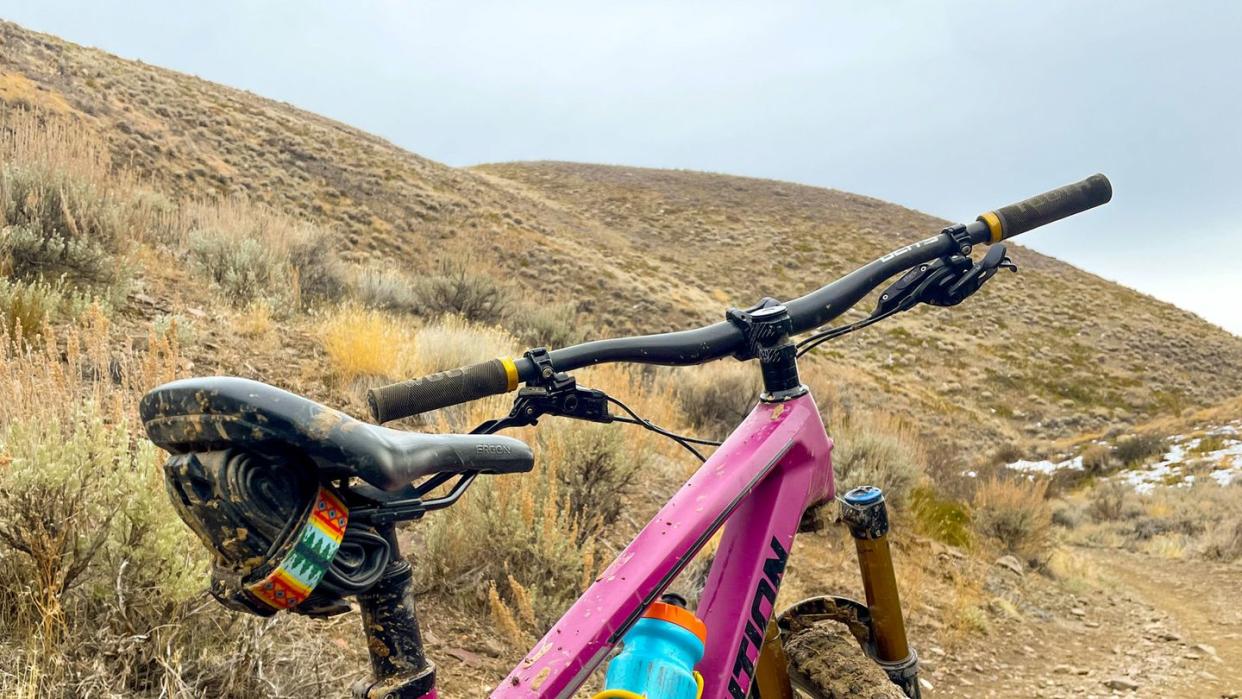
"Hearst Magazines and Yahoo may earn commission or revenue on some items through these links."
Buying a brand new mountain bike can be an exhilarating purchase, but one thing you don’t want to overlook is the saddle, or seat. It’s one of three contact points you have with your bike (the others being the pedals and handlebars) and, by far, it's the largest one, so having the right mountain bike saddle is key. Not only can it help to make your ride more comfortable, but the right bike saddle may also boost your performance and shave time off your speed records.
The optimal bike saddle for each rider is based on a number of factors, many of which are personal. For instance, it's important to choose the correct saddle width based on the distance between your sit bones, and to select the right amount of padding, which correlates to how long your average ride is and how aggressively you pedal.
There are other elements to take into account, such as whether you want a gendered saddle (some people prefer this option; others go for unisex), and the curvature of the nose, which is based on your body position during uphill climbs. These may seem like smaller details, but tcut-outs, curvature, and materials can also make a big difference, even during short rides.
Almost all mountain bike saddles have a rail mounting system which is easy to adjust. You’ll need an Allen wrench to change your saddle, so you can easily do it at home in under 5 minutes.
Best Mountain Bike Saddles
Best Overall Mountain Bike Saddle: Specialized Power Comp
Best Budget Mountain Bike Saddle: Venzo Bike Bicycle Saddle Seat
Best High-End Mountain Bike Saddle: WTB Volt Carbon Saddle
Best Gravel Mountain Bike Saddle: Specialized Sitero Saddle
Most Comfortable Mountain Bike Saddle: SDG Components Bel-Air V3 Max
The Expert: I’m an outdoor and adventure travel journalist—and an obsessive mountain biker. I bike 1,000 miles a year with about 150,000 feet of climbing since I live in the Sierra Nevada Mountains. At any given time, I have about 30 QOMs on Strava and bike just about every day when my local trails are melted out. There are two mountain bikes in my rotation—a burly enduro ripper and a custom all-mountain 29er—as well as an indoor mountain bike (like a Peloton, but made for mountain biking).
About a year ago, I spent a lot of time trying out saddles by testing different angles and handlebar reaches. Since I spend so much time biking, even small annoyances become noticeable over time. I’ve also dealt with plenty of saddle sores and been in and out of PT for injuries caused by “repetitive rotation motion” (medical lingo for “biking too much”) so I’ve spent a considerable amount of time learning what goes into an ideal mountain bike saddle. I have two outdoor saddles—one is stiff and efficient while the other is slightly more padded and comfortable for longer rides. I’ve tested and researched quite a few, and am happy to share the fruits of that labor.
What to Consider in a Mountain Bike Saddle
A bike saddle can improve your ride dramatically so you’ll want one that matches your body shape, aligns with your style of riding, and has enough padding. If you experience any soreness or chafing, it is likely you’re in need of a different saddle.
Body shape
The shape of your hips and rear play a crucial role in choosing the right mountain bike saddle. Saddle width is determined by the width of your sit bones (technically called the ischial tuberosity) or the lowest part of your pelvis bones. Those two contact points should hit the cushioned part of the saddle, which should also have a curve that matches that shape. Having a saddle that gently cups your butt keeps your body from shifting too much while riding. In turn, that helps to ease the friction that causes chafing and saddles sores.
Good to Know: How to Do a Pre-Ride Check and Repairs You Can Master at Home and How to Perfect Bike Tire Air Pressure
Most bike shops have a simple tool to measure your pelvic width, but you can do this at home by sitting down firmly on something impressionable like a piece of Styrofoam or lofted cardboard. Then you measure the distance between the two deepest impressions left by your sit bones. Add about 25mm and look for a mountain bike saddle around that width. Many retailers also have saddle finders on their websites to help you narrow down the best possible options.
Riding style
If you do mostly gentle cross-country riding and spend a lot of time sitting upright, you may want a wider saddle with a wider nose. I do mostly uphill rides followed by flowy or steep downhills so I opt for saddles designed for climbs to make the nose more comfortable when leaning into it. Downhill comfort doesn’t matter as much to me since I’m usually standing.
Enduro mountain bikers need a seat that’s comfortable in multiple positions, since they’ll be making lots of quick up-and-down movements, plus quick, hard bursts of pedaling.
There’s no right or wrong way to buy or build a bike if you’re comfortable on it. “It’s 100-percent personal preference depending on your riding style,” professional freeride mountain biker Mark Matthew told me. “As a freerider and dirt jump rider, I run a dirt jump saddle on all my bikes, even my enduro and trail bikes. A dirt jump saddle is designed to complement trick variations by being grip-able, pinch-able, yet slim. This is perfect for the type of riding I do and still reasonably comfortable on climbs."
Padding and cushioning
Surprisingly, more padding is not always better. Err on the side of less padding since you’ll likely wear a chamois. Too much padding can create a “bouncy” feel, which is both hard on your low back and wastes a lot of your uphill power, especially on a full suspension bike. Padding can also wear out, slowly shifting your body position.
More padding also usually means a thicker saddle, which can lead to more chafing and rubbing, and quite possibly, a sweatier ride, since air flow is likely to be reduced. If you ride in hot conditions, a sweatier pelvis and butt leads to—you guessed it—more chafing and saddles sores.
How We Selected Mountain Bike Saddles
Most of the recommendations below are based on my own testing and experience. For saddles not tested by me, I sourced feedback from fellow mountain bikers, pored over online reviews from novice, recreational, and professional MTBers, and relied on my own personal knowledge of comparable products from the brands.
Power Comp
While I looked at constant crowd-pleasers like the WTB Silverado, Fizik Alpaca, and Ergon Enduro Pro (all great options), I kept coming back to the Specialized Power Comp. It is the best blend of performance, comfort, cost, and durability for the largest segment of mountain bikers.
The Power Comp has a carbon shell to cut weight and comes in three sizes, making it appropriate for a wider range of bodies. It’s a level 2 (of 6) comfort rating, skewing on the performance/speed side, but easier to make more comfortable by simply adding a padded bike chammy.
There's a long and wide channel to ease pressure for both men and women, as well as anyone who rides in a more aggressive, rotated-forward position. The curvature (roundness, if you’re looking at it from behind) is enough to reduce chafing and pressure points, but still curved at the back to support your rear.
On the off-chance one of the three available sizes isn’t a right fit, check out the very similar Power Expert, which offers a 130mm width at an impressive 221 grams.
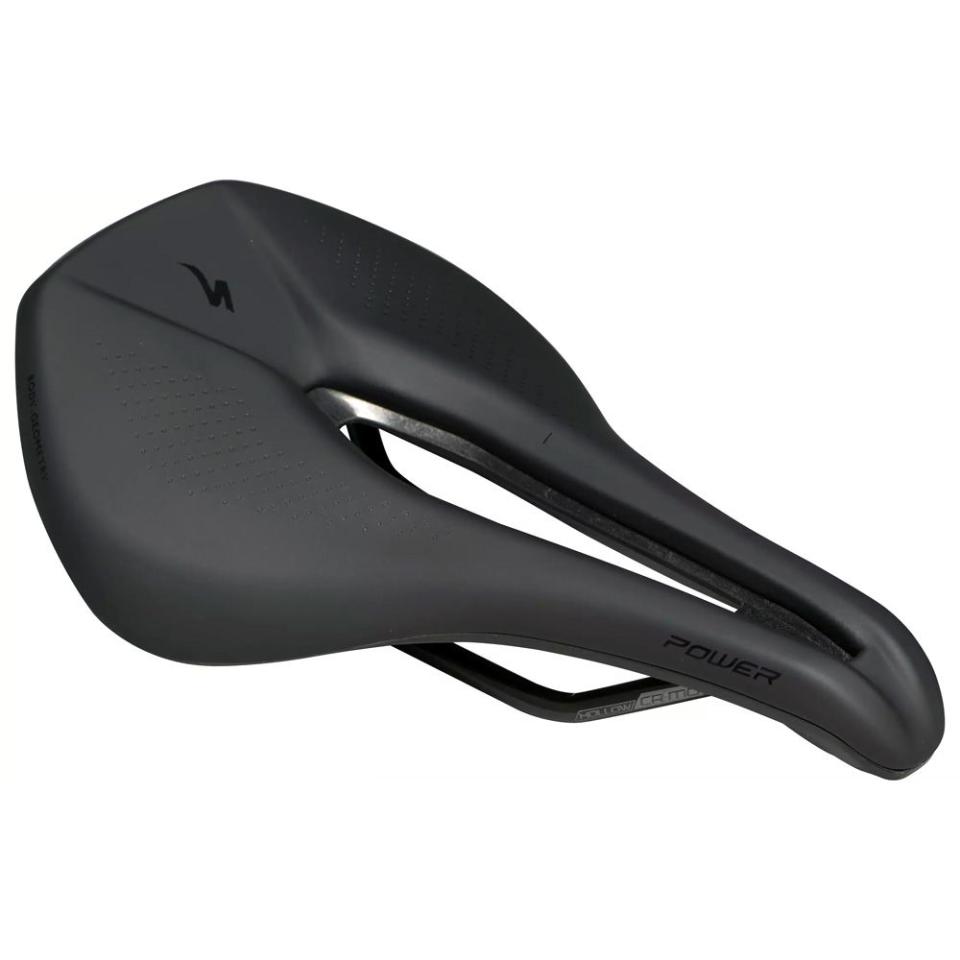
Power Comp
specialized.com
$140.00
Bicycle Saddle Seat
If you're looking for a bike saddle that’s highly rated, works for men and women across a range of riding styles, is comfortable, and affordable, the Venzo will fill most of those boxes.
Made for technical biking, this bike saddle is not going to be “soft” by cruiser bike standards. That said, it has a mid-level thickness, so it’s not bare bones, offering enough padding to support your sit bones but with a thin enough nose that minimizes pressure points on uphill climbs.
If you're in search of a budget-friendly, overall pretty-darn-good option, this will likely be the best mountain bike saddle for you.
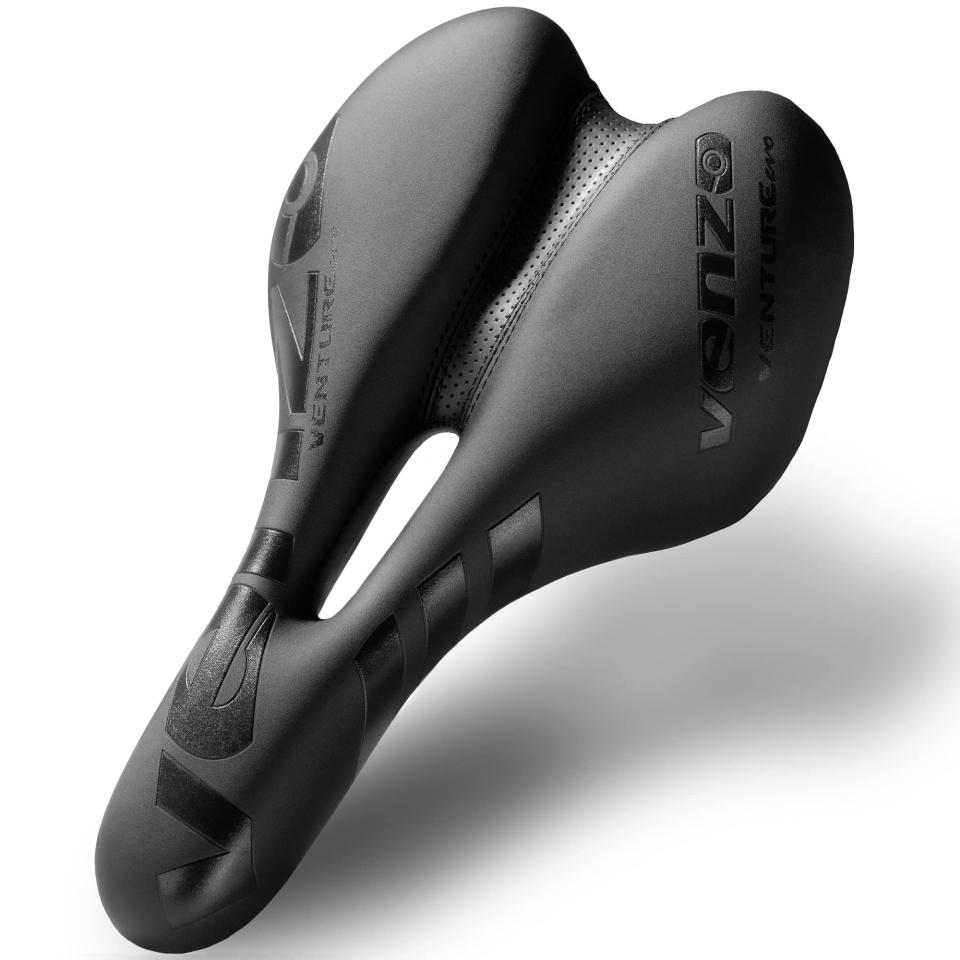
Bicycle Saddle Seat
amazon.com
$29.98
Volt Carbon Saddle
If you know that you want the best of the best when it comes to seats, and cost isn't a factor, this is the way to go. The Volt is gently contoured to be raised in the rear and the nose favoring an aggressive climbing position.
While it’s quite thin, the recessed padding and flex of the high-end materials make it unexpectedly comfortable, and it’s more durable than you’d imagine, too.
However, unless you’re pedaling every day with the goal of shaving seconds off your time or actively race training, you can probably skip this saddle. It’s amazing, but pricey.
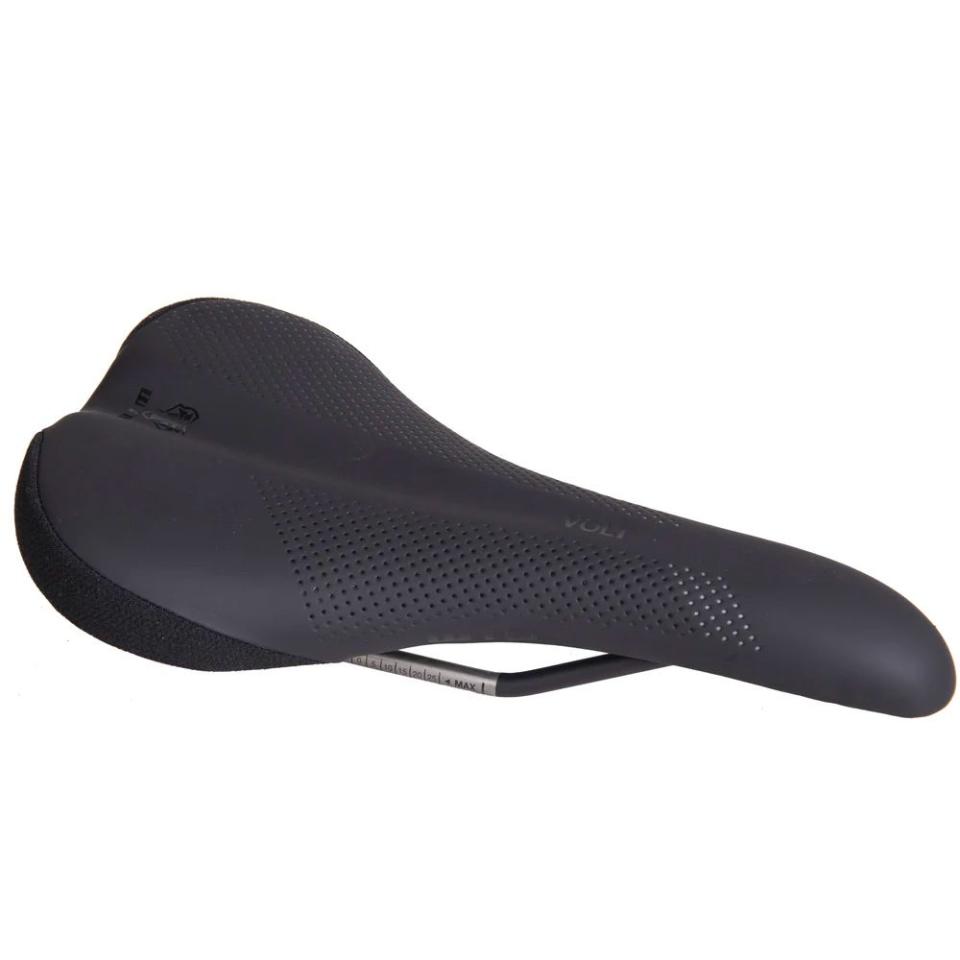
Volt Carbon Saddle
wtb.com
$249.95
Sitero Saddle
Gravel grinding is a beast, with some riders choosing bikes akin to hardtails and others cruising on more road bike-esque options with drop bars. Regardless of the bike, riders who opt for gravel spend their time in a more forward-leaning position, putting more of their weight toward the nose of the bike on chattery, uneven terrain.
The Specialized Sitero offers two useful features for gravel riders. First, it borders on the short-nose side of the spectrum, creating less real estate to slide around on the nose when navigating bumpy sections, especially with limited travel. It also has a large cut-out, with extra width in the areas where riders are most likely to experience numbness—a common problem when your bike is vibrating non-stop during a multi-hour gravel slog.
This bike saddle comes in two widths: 130mm and 155mm. Most short-nose saddles are designed to be wider than those with a longer profile, so you may want to size up, rather than down.
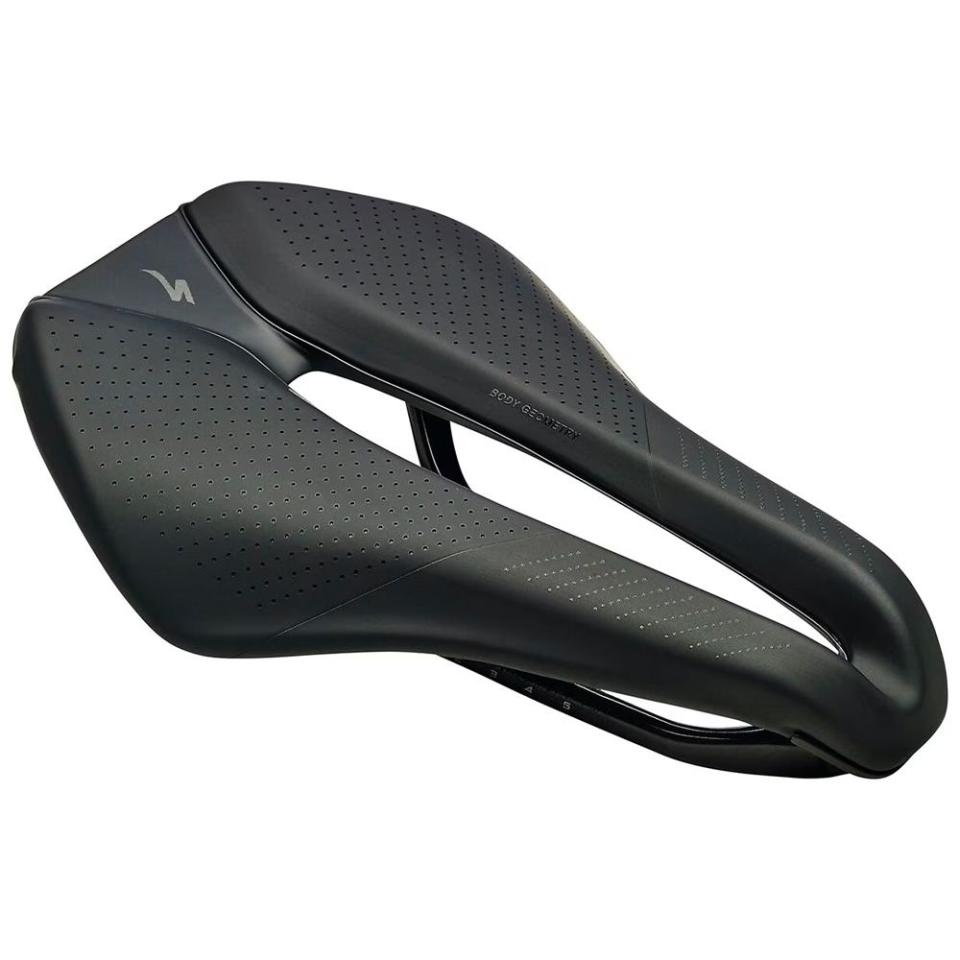
Sitero Saddle
backcountry.com
$160.00
Bel-Air V3 Max
It makes sense that the Bel-Air V3 Max is supremely comfortable, as it’s purpose-built to prioritize your tush above all else. Fortunately, this bike saddle takes its inspiration from the performance-focused Bel-Air V3, so it manages to find the balance of both qualities—performance and comfort.
The saddle's channel is deep and long enough to benefit both men and women (and especially men given the depth toward the middle of the saddle) while the saddle’s raised rear and slightly curved nose should help both men and women be more comfortable in an uphill climbing position.
This is likely the saddle I will buy next for my enduro bike despite it not being an enduro-specific saddle (which shows you just how much of getting the “right” saddle is a matter of personal preference).
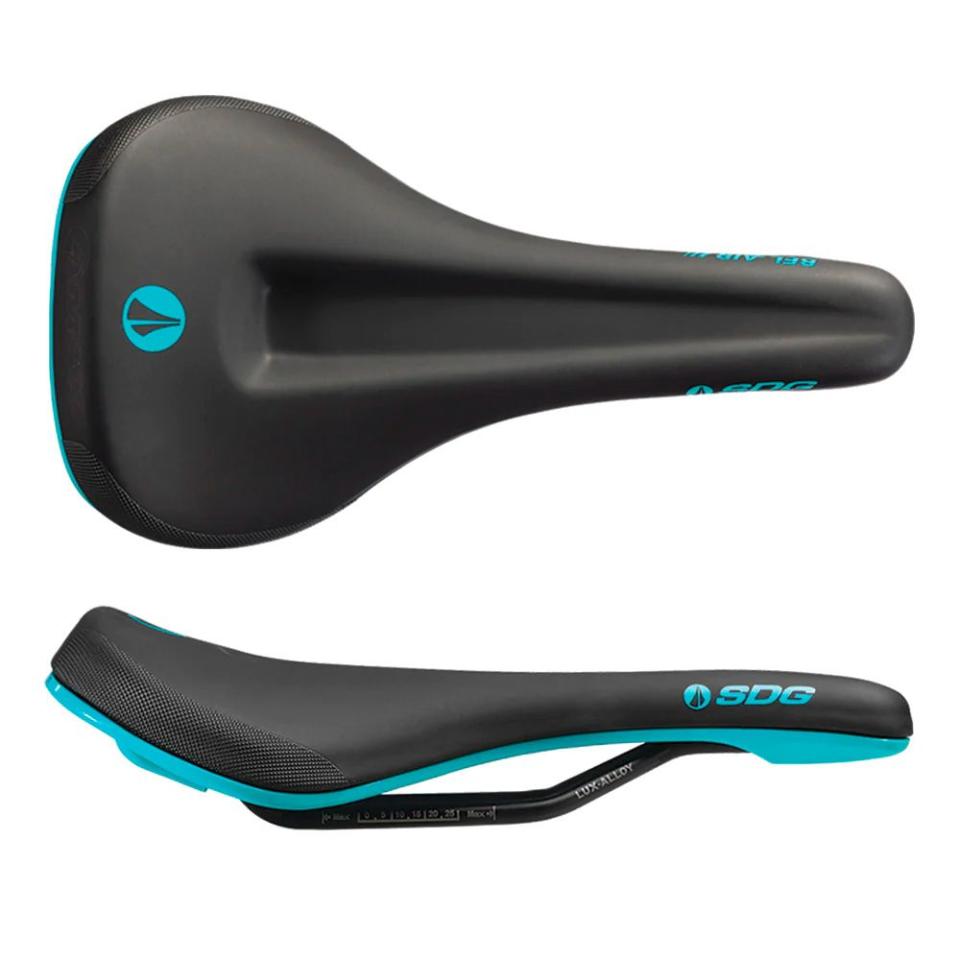
Bel-Air V3 Max
sdgcomponents.com
$75.99
X-LR Superflow TI216
Picking the best saddle for setting PRs isn’t rocket science: go for something that doesn’t weigh much and is comfortable for long-distance pedaling at a high RPM. For that, look no further than the X-LR Superflow TI316 Saddle from Italian brand Selle.
This bike saddle weighs 165g, with most of the weight savings coming from the carbon frame. It offers one of the most generous cut-outs I’ve seen in a saddle. If the saddle fits, it should be on the more comfortable side, providing significant air flow while reducing pressure points. Keep in mind that a larger cut-out means more pressure per inch on the other areas of the saddle, and if it doesn't fit correctly, that could lead to tender areas.
At this low weight, it’s not at all surprising that the frame is carbon, but the rails are titanium, making them a bit stronger and more durable, and hopefully, less likely to shift during a dreaded high-speed crash.
If you are counting grams—literally every gram—then you can cut the weight by one-fifth with the X-LR Kit Carbonio Superflow made with carbon rails and weighing in at 130 grams.
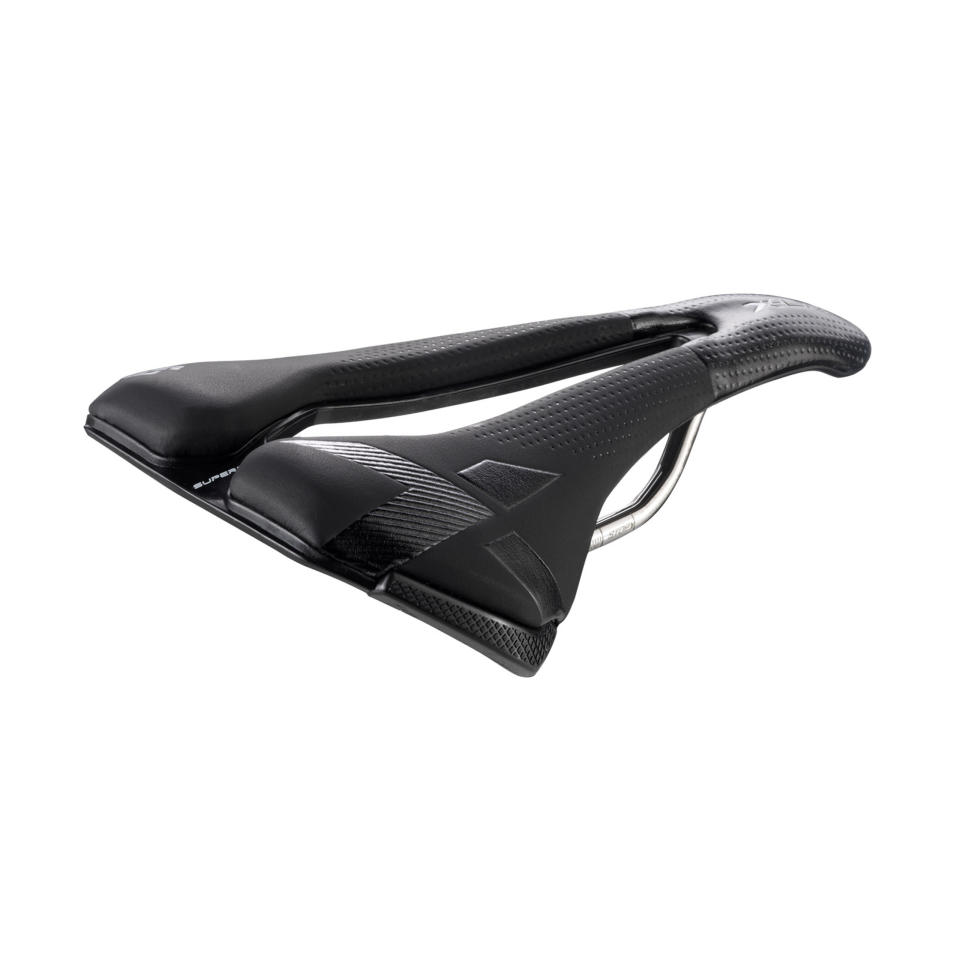
X-LR Superflow TI216
selleitalia.com
$179.90
SM E-Mountain Pro Women
On my all-mountain bike, this is the saddle that I use, and it’s extremely comfortable. While not as aggressive as a thinner or lighter seat, it’s still well suited for just about everything I do on the trails—and if I want something more aggressive, I’m using a different bike.
The Ergon saddle (as in “ergonomic”) has a curved back (“rear ramp”) and a flat nose, both of which help to keep you in a comfortable, correct position while leaning forward during climbs.
There’s also a large, front-forward cut-out to ease pressure on soft tissue (again, beneficial when climbing). While I've never had issues with chafing, I have had challenges with friction points and rubbing, and the SM E-Mountain pro has done an excellent job of reducing those.
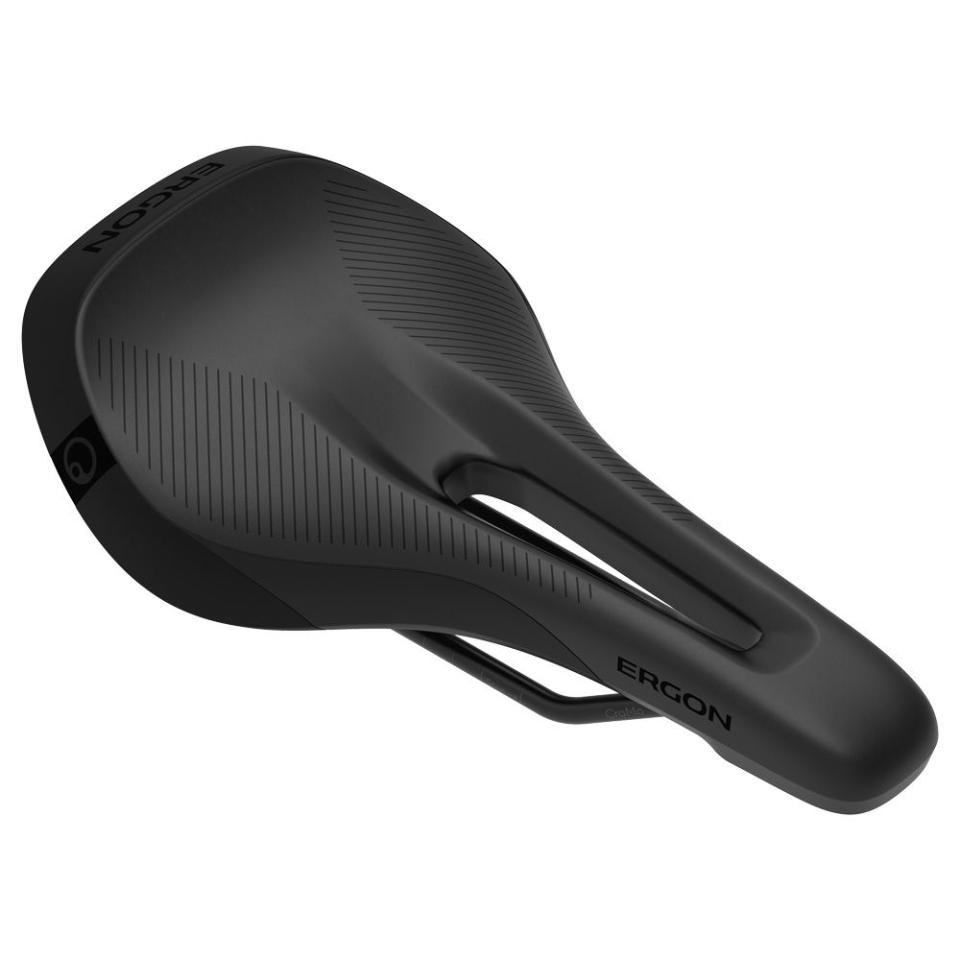
SM E-Mountain Pro Women
ergonbike.com
$119.95
Verse Comp Bike Saddle, 165mm
It’s tempting to think that a wider saddle will be more comfortable, or that anyone who considers themselves plus-sized will need a wider saddle. But it really depends on the distance between your sit bones; some big and tall buyers will be fine on narrower seats, while some petite riders may prefer a wider seat.
If you're on the wider side, the Bontrager Verse Comp Bike Saddle will likely be a great fit. It comes in a 165mm option, with a long, wide cut-out that reduces pressure points for both male and female anatomy. It also doesn’t add on other “big and tall” design aspects that might slow you on the trails, forgoing extra padding or burlier materials. It’s an excellent wide saddle that still maintains a performance focus.
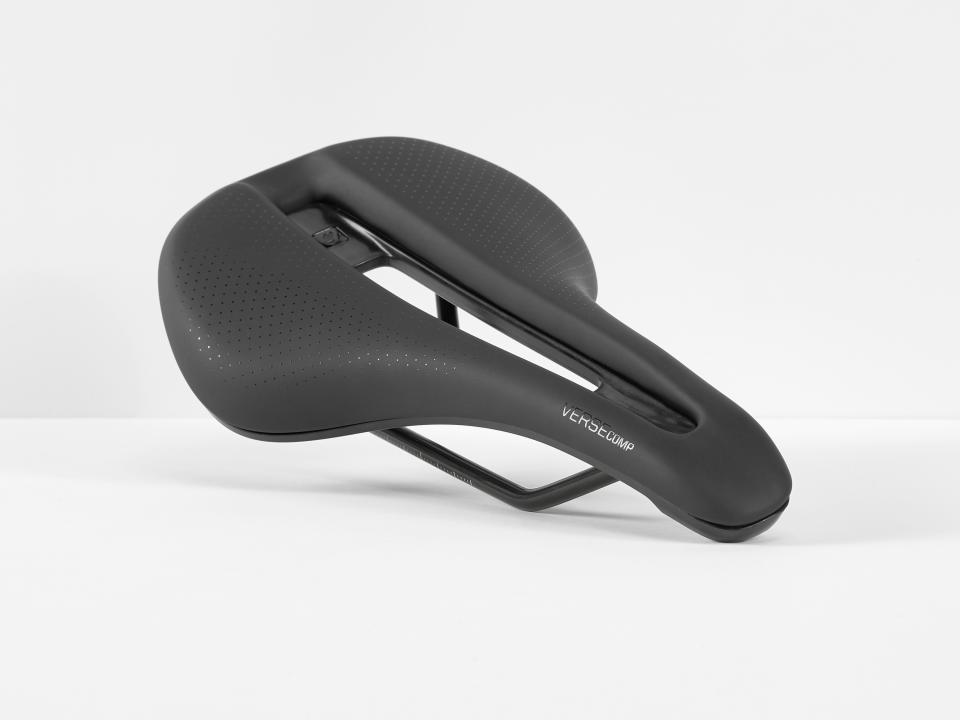
Verse Comp Bike Saddle, 165mm
trekbikes.com
$79.99
Components AM Speedtrap
Most of the bike saddles recommended in this roundup come in either black or dark gray, but the Speedtrap Saddle from Diety comes in about a dozen color combos.
Yes, it looks good, but the Speedtrap is also a decent overall saddle. It has a moderately padded foam cushion, reinforced materials on the sides (useful for resting against trees and taking those essential B.A.A.W—bike against a wall—photos), and slightly flexible sides to reduce rubbing on long pedal sessions.
Of note, this is one of the few modern saddles without a channel or cut-out. This distributes your weight more evenly across the saddle, but may make for a slightly warmer (and sweatier) ride.
The Speedtrap comes in either a rail or I-beam style. While the majority of mountain bikes mount with rails, check your bike before you make a purchase.
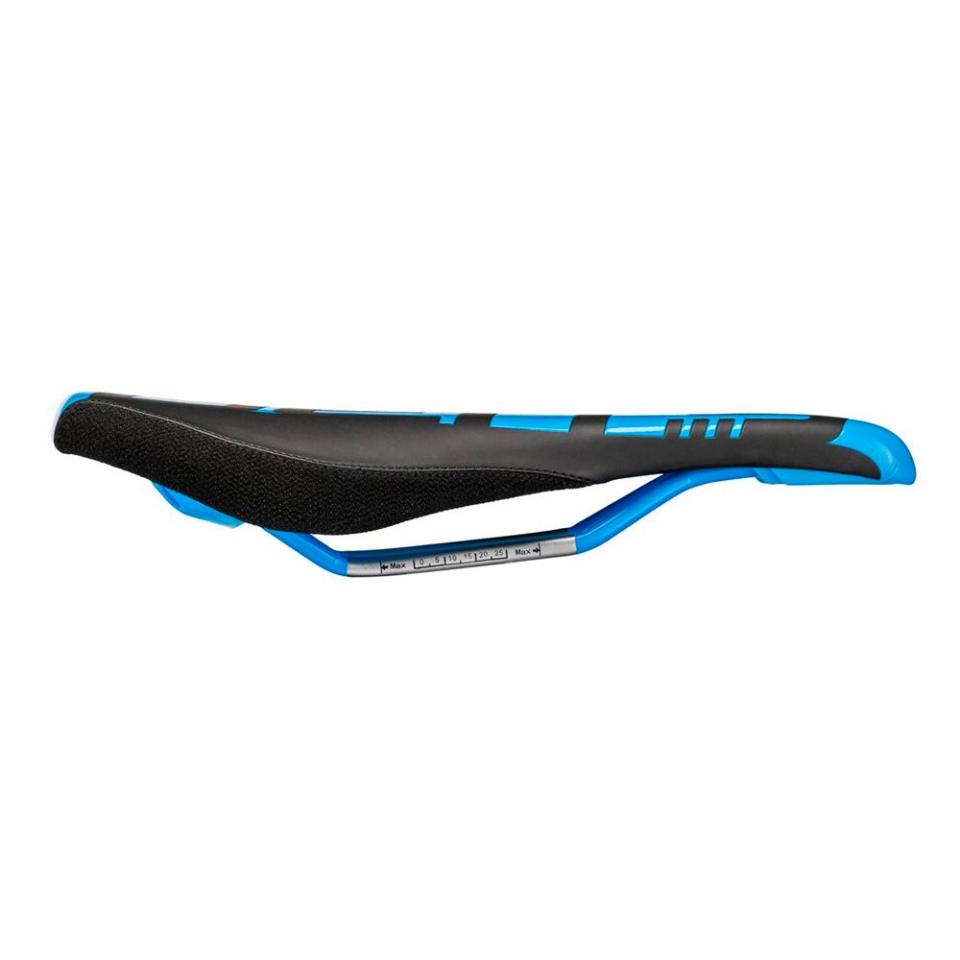
Components AM Speedtrap
jensonusa.com
$84.99
Comfort Gel Bike Seat
If you spend a lot of time biking indoors, as I do in the winter, you may have noticed that your body feels different after an hour on the indoor bike versus your outdoor one.
Even on bikes that automatically adjust the bike angle (like a NordicTrack), you’ll generally move less than you would outside which leads to more consistent pressure, and likely, less time out of the seat. You’ll want a bike with more padding than normal, such as the Comfort Bike Seat from OUXI—a great buy, even if it doesn’t come from a brand name.
This bike saddle is a bit too heavy for outdoor use and it's made with inexpensive materials, so its not ideal for serious outdoor riders. But since you’re in a fixed position and don’t put much wear and tear on an indoor bike saddle, it won't matter.
This saddle has gel cushioning, and while it’s not as padded as you could get, I’d suggest not going much squishier as it’ll be too bouncy for big pushes in online classes.
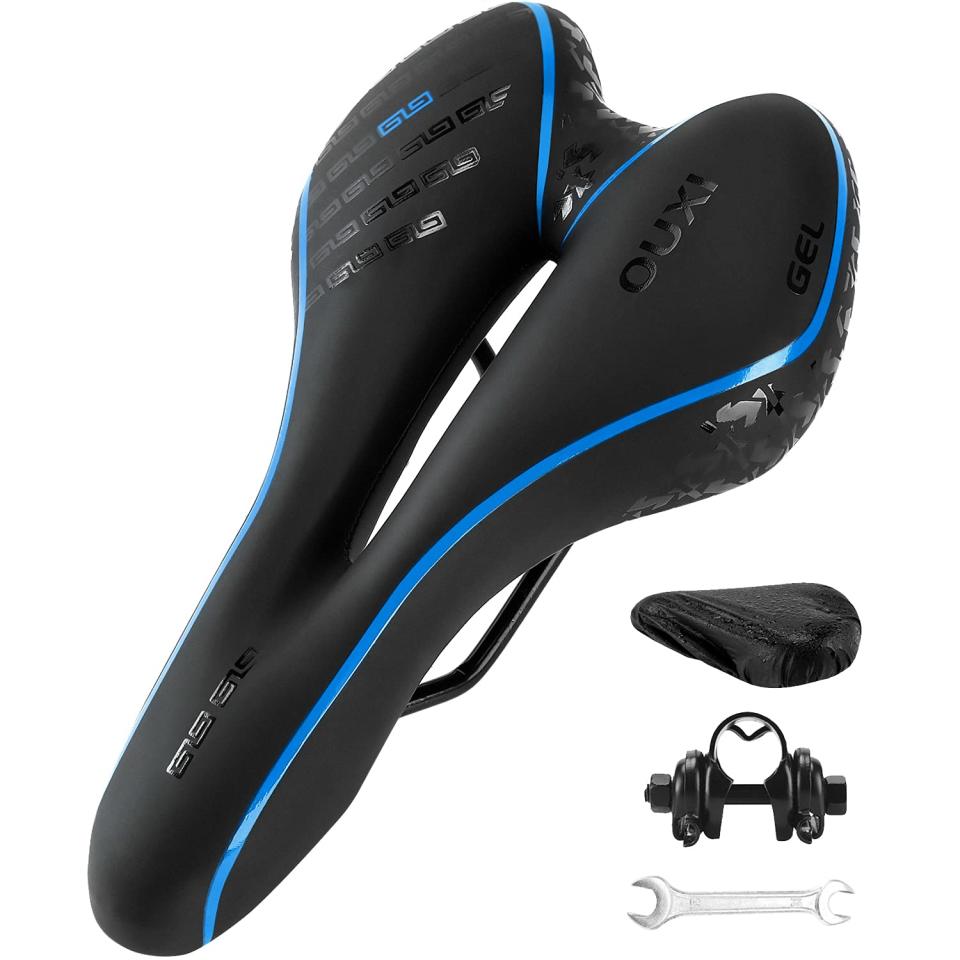
Comfort Gel Bike Seat
amazon.com
$22.99
Optimize Your Ride With the Right Seat. Check Out These Tips From Expert Suzie Dundas.
Is a cut-out important for a saddle?
The main purpose of a cut-out is to reduce pressure on sensitive areas around the pubic area and tailbone. Aside from the comfort you’ll gain from alleviating some of that pressure, cut-outs also help maintain blood flow, which both reduces butt numbness.
Being numb around your butt and pelvis can make it harder to detect friction or sore spots, leading to an increased risk of saddle sores. Cut-outs also help increase airflow and keep your private parts cool, which creates a more pleasant ride (and helps reduce saddle sores).
For men, saddles tend to be slimmer and have cut-outs toward the middle of the saddle to accommodate their anatomy. Women’s saddles tend to be a bit wider (as women generally have wider hips) with cut-outs placed more toward the front, alleviating pressure on the more sensitive parts of the female anatomy when riders are in a forward-leaning, climbing position.
If I am getting blisters or chafing, what’s wrong?
Saddle sores and red spots are something I’ve experienced throughout my entire mountain biking career. While I’ve been able to mitigate these issues by trying different saddles and rotating through multiple chammies to change up the pressure on back-to-back rides, I have not totally eliminated them (and am not willing to bike less frequently). To get some guidance, I asked a mountain bike pro what he’d advise.
It may be surprising to read in a buying guide that the first thing you should do isn’t replace your saddle, according to Curtis Opperman, owner of Black Rock Bicycles in Reno, Nev. He advises trying a few cheaper fixes first. “Chammy or padded shorts help,” he says, especially as it’s easy to have a few different chammies in your closet.
After that, he recommends playing around with the angle of your saddle to keep from you from going numb too quickly. Pointing the nose down a bit will make for more comfortable climbing (though don’t go too far, or you’ll put too much weight on your hands), while a more level saddle will likely be more ideal for relaxed climbing. The geometry of your bike (specifically, the seat tube angle) will also influence how tilted you want your seat.
Other factors to play around with include adjusting your dropper post’s maximum height, mounting your bike closer or further from the handlebars, and potentially leaving your suspension open (if you normally lock it out) on easier uphill climbs.
What is the difference between a mountain bike saddle and road bike saddle?
The main differences are the design and functional priorities. Mountain bike saddles are configured to accommodate variable and angled terrain, and need to perform and support riders over large and bumpy impacts, like when going through rock gardens or hitting drops and loose freeride terrain.
They’re comparatively more padded and more comfortable than road bike saddles. Mountain bike saddles may also incorporate reinforced materials and protective features to endure potential impacts.
Road bike saddles prioritize a lightweight and streamlined design, built for non-stop, long-distance pedaling. While mountain bikers certainly pedal long distances, since the proper downhill MTB position is standing, they tend to spend less time in the saddle.
Road bike saddles—made for riders who are generally pedaling more of the time—generally tend to be slimmer throughout the seat and nose to reduce friction and chaffing, especially when pedaling at a high RPM. Road bike saddles also tend to have less padding since they don’t need to absorb as much impact, and are usually mounted at less of angle.
Mountain bike saddles sometimes are angled slightly downward to accommodate more comfortable climbing, especially on longer or more slack bikes.
What mountain bike saddle do you have?
I have two mountain bike saddles—one for each bike. Or three, if you count my indoor bike.
On my all-mountain bike, a custom transition with a 130/140mm travel and 29er wheels, I have an Ergon SM E-Mountain Pro (my pick for the best women’s saddle). According to my Strava records, I’ve put 793 miles on this seat since I bought it in April 2023, and I can confidently say that my issues with butt pain, numbness, and saddle sores have drastically decreased. My longest streak was riding 23 days in a row on this bike, and while I had the usual muscle fatigue, my butt didn’t hurt any more than anything else on my body.
On my enduro bike, a 29er with 160/170mm travel, I have a more aggressive seat (read: slightly less comfortable). This bike is bigger, heavier, and more burly, and can handle steeper, rockier descents with less of a concern for choosing the right line. It’s also not designed to be as much of an uphill pedaling machine, so in general, I use this one more for shuttling and park riding when I’m spending less time in the seat.
On this bike, I have a Bontrager Arvada, though I’ll probably be swapping it out soon as I managed to tear a hole in it (now duct taped) after going OTB and flipping my bike in a particularly gnarly rock garden. I’ve put about 1,400 miles on this one in the last two bike seasons.
Inside, I have a NordicTrak S22i Studio bike. It’s similar to a Peloton, except it has outdoor POV riding on mountain bike trails (via iFit), and automatically adjusts the bike angle and resistance to mimic outdoor mountain bike riding. I’ve been very fortunate to find the standard saddle extremely comfortable, though many of my friends with this bike and other indoor options have disagreed with that assessment.
If I ride frequently, do I need more than one saddle to change off?
Need? No. Want? Maybe. But only if you really want it. While changing a bike saddle is a rather easy fix, it’s still not something you’ll want to be swapping before every ride.
A better solution would be to buy a saddle cover (just be sure the combo doesn’t add too much padding) or rotating in different pairs of mountain bike chammies (as I do), so you don’t have fabric rubbing and pushing on your skin in the same spots during multiple days of riding.
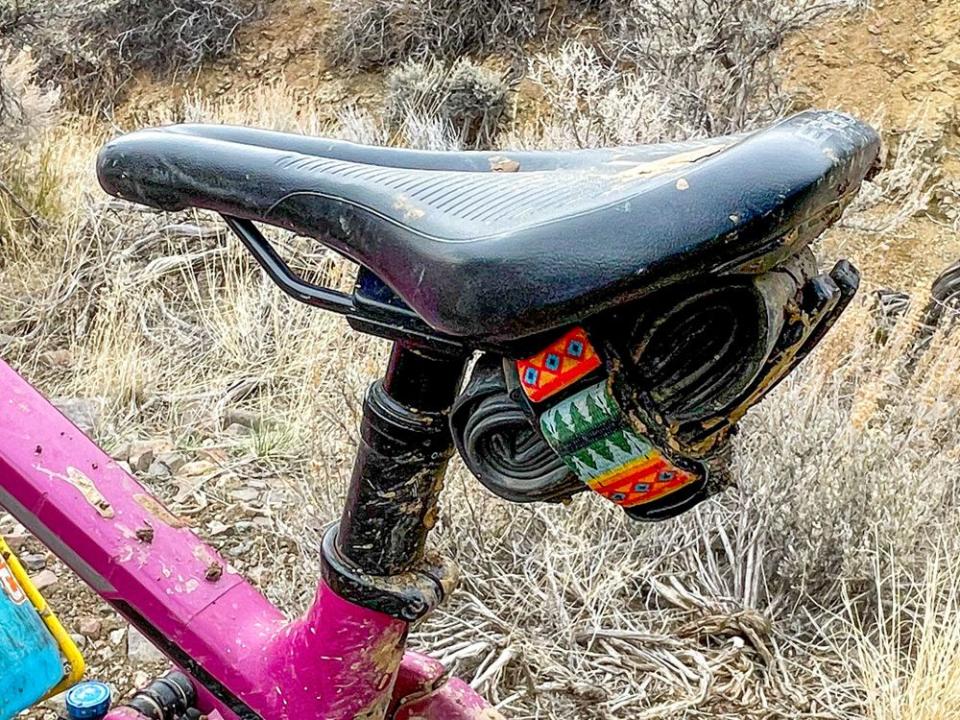
You Might Also Like

